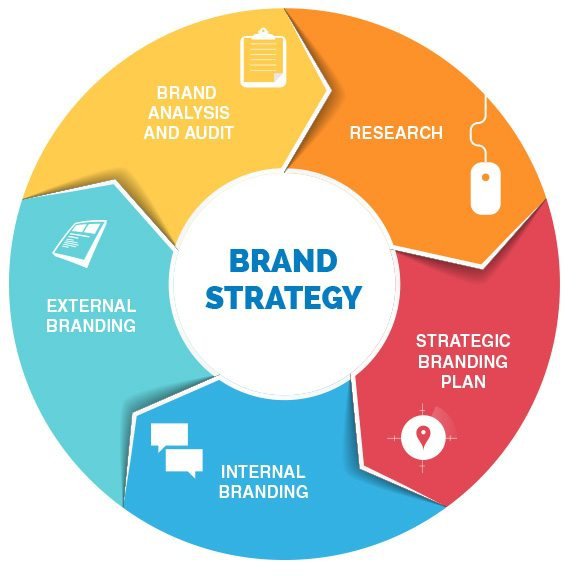Humans have a proclivity for decision-making shortcuts, and brands play a pivotal role in facilitating this process. A significant majority of consumers (76%) express a preference for brands they feel connected to over competitors. Establishing this connection necessitates a well-defined brand strategy that articulates the purpose of your existence, coupled with a robust marketing strategy to effectively communicate that purpose to your customers.
In order to create the ultimate brand strategy you’ll need to have first created your companies Brand Identity.

Crafting a Successful Brand Marketing Campaign
This article delves into the intricacies of designing a successful brand marketing campaign that not only conveys your brand’s core values but also generates content that resonates with your customers. Understanding the difference between brand strategy and marketing strategy is crucial. The former sets the long-term direction by defining the purpose, core values, and positioning of your brand. On the other hand, the latter serves as the vehicle to amplify and communicate this brand identity through various tactics such as campaigns, content, PR, and interactions with the target audience.
Aligning Strategies for Sustained Success
A prime example is the global employment platform Indeed, whose brand strategy, centered around the value of “Job seeker first,” has been instrumental in attracting over 250 million job seekers monthly. The alignment of business strategy, brand strategy, and marketing strategy is key to sustained success. Brand strategy focuses on the overarching narrative that resonates with customers, while marketing strategy adapts to changing circumstances, continuously evolving based on campaign performance, customer needs, external trends, and events.
Building Brands from the Inside Out
To stand out in a crowded market, businesses must build their brand from the inside out, ensuring a consistent brand identity at every customer touchpoint. Instead of overwhelming potential customers with short-term-focused messages, marketers should aim to become the top-of-mind choice for customers when they are ready to make a purchase, fostering long-term relationships through brand awareness and lift. A successful brand marketing strategy comprises three components: expressing brand values to build trust, maintaining top-of-mind awareness through creative initiatives, and fostering brand affinity through positive customer experiences.

Establishing a Strong Foundation
Establishing a strong foundation involves understanding and expressing your brand’s purpose and values, as trust plays a pivotal role in purchasing decisions. A brand marketing strategy should also encompass the entire customer experience, ensuring consistency across all touchpoints. Conducting a brand audit and simplifying the user experience are essential steps in creating a loyal customer base.
Timeless Success Through Branding
In conclusion, as Stephen King aptly noted, “A product can be quickly outdated, but a successful brand is timeless.” Crafting and expressing a brand through effective marketing strategies not only keeps your brand relevant but also increases the likelihood of being remembered by customers when they are ready to make a purchase.
If you are looking for more details this video below demonstrates the key differences between a Brand Strategy and a Marketing Strategy.
